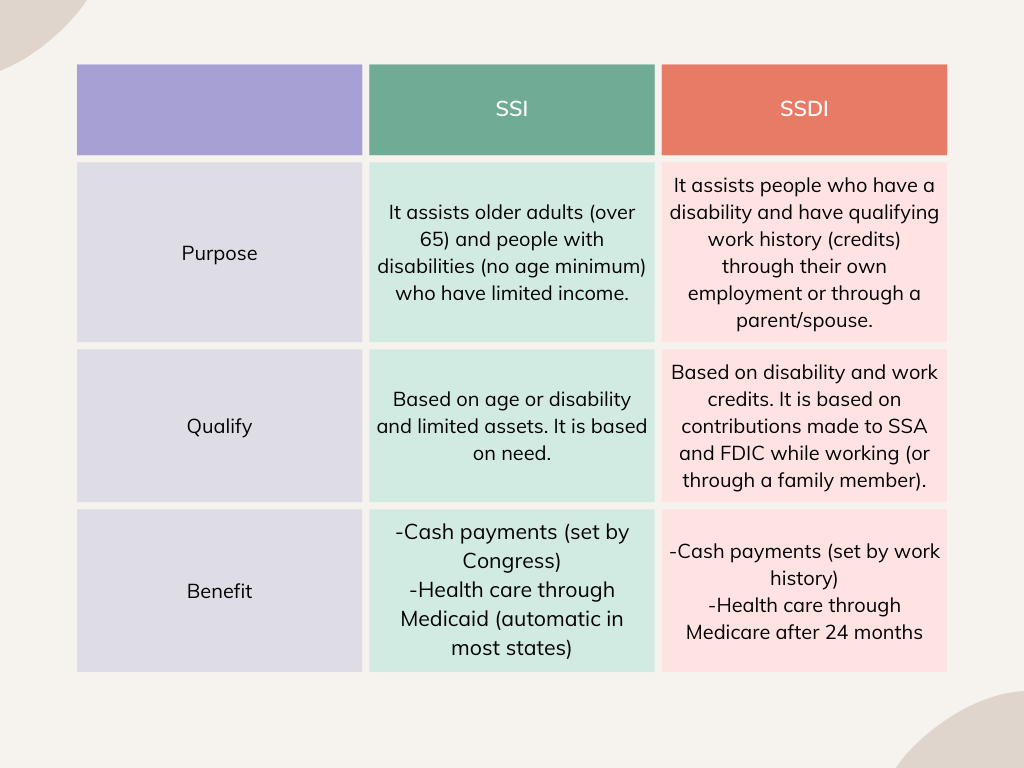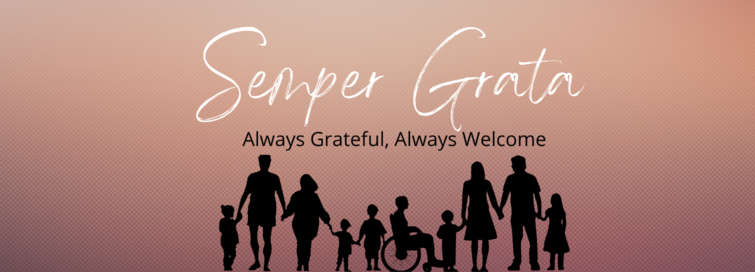I am often asked about Social Security Disability Insurance (SSDI) when I present on Supplemental Security Income (SSI). Most families I speak to will deal with SSI first, so I don’t discuss SSDI other than to tell them it exists. Lately, I have been receiving more questions from parents about SSDI qualification for their adult disabled child when they retire. The Social Security Administration (SSA) can be very complicated and confusing. Although they have different rules, both SSI and SSDI provide monthly benefits for people with disabilities.
Quick overview of the programs:

How Does this Affect Your Child with a Disability?
When your child turns 18, they should apply for SSI if they meet the income limits and disability definition. Hopefully, you have shielded your child’s assets, so they qualify. Once approved, they keep the cash benefits and Medicaid if they continue to meet the asset criteria. This is why I write and speak to parents about how to Plan for the Future because a change in resources can disqualify them from their cash benefits at any time.
I discuss with parents the importance of ABLE accounts and Special Needs Trusts in providing financial assistance to their adult disabled child without affecting their benefits. I strongly believe both options are the best way to help your adult disabled child with the enormous cost of living with a disability. But SSDI is another benefit that they may qualify for through your work history.
The Disabled Adult Child (DAC)
SSDI is usually a benefit for people who have worked and then become disabled. But, there is an exception for your child if their disability began before age 22, called the Disabled Adult Child (DAC). If your child’s disability began before age 22, they can qualify for SSDI through your work credits. These benefits begin when a parent is deceased or receiving retirement or disability benefits. It gets confusing because SSA uses the term “child”, but they are not referring to a minor, only that the individual is your child.
Your adult child must meet the same SSA disability criteria required for SSI benefits and they must not be married. If they are married, they lose the DAC qualification, except if they marry another DAC recipient. The Substantial Gainful Activity (SGA) requirement for SSDI is the same as SSI, $1,550 per month in 2024. DAC benefits are based on the parents’ earning record, so it doesn’t matter if the DAC has ever worked. DAC does not have an asset limit like SSI, so your child might not have qualified for SSI because of income and resources but qualify for SSDI because assets don’t matter. Once they meet the eligibility criteria for SSDI, they will continue to receive benefits as long as they meet the disability criteria.
Cash Benefits
Congress sets SSI benefits and can change every year. The 2024 SSI maximum payment for an individual is $943 a month and some states add a supplement to this. SSDI payments are determined by the work history of the parents. The disabled adult child receives 50% of the parents’ Social Security benefits (without affecting the amount the parent receives) or 75% of their Social Security benefits if the parent dies. SSA reported in September 2023 that the average monthly benefits paid to children of disabled workers were $1,350.
Conclusion
This is a quick examination of SSDI. As with any government benefit, it is more complicated and has exceptions and exclusions for certain situations. Always check with SSA or an attorney to be sure you understand how your child may be affected. Check the program out so you know what to expect and how to prepare for the future.
For more information about protecting your child’s income so they qualify for government benefits, check out my Amazon best-selling book Planning for the Future: Protecting a Loved One with a Disability.



